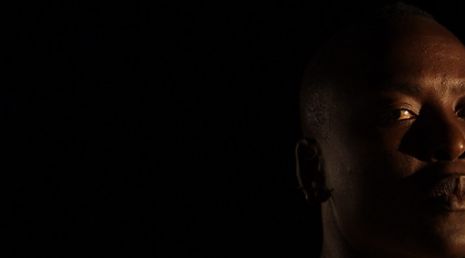Influences and Lineages
I came to dance via an atypical route. I studied law in Zimbabwe before coming to the USA. Because of this I believe that my “seeing” of dance is through a myriad of ideas. I feel very much influenced by the other plastic arts: sculpture, painting, music, cinema, photography, theater and literature, and less so perhaps by dance. I sympathize with the solitude of a sculptor or painter or writer, which is why the solo form is my first true love.
Cinema is very kin to dance in that it is moving images, and photography is movement frozen in time. The works of Ousmane Sembene, the Senegalese filmmaker had a huge impact on how I frame/see Africa in my work, as the center and not the periphery.
The photographs of Seiko Keita; the writing of Dambudzo Marechera, Chinua Achebe, Ngugi wa Thiongo, to name a few of those who showed me how to talk directly about one’s colonial history.
Seydou Keita was able to show an African’s pride in presentation: how you look, compose yourself for the public gaze. The public being an African public. How Africans show themselves to other Africans, again a letting go of the colonial gaze. This is really an important theme that really moves me in Keita’s work.
Shona sculpture, as well European masters such as Rodin and Henry Moore. Why? Sculpture has weight, volume and movement!
The African musicians who so ably mix tradition with modern ideas such as Thomas Mapfumo, Franco and his OK Jazz, Om Kalsoum, and Miriam Makeba.
Finally like most dance makers working now, the work of theater mavericks such as Peter Brook, Grotowski, Tadeusz Kantor, Wole Soyinka, continues to play an important part in the way I think of dance as theater. Pina Bausch is also important because she was unafraid to be ugly. All these people were pushing conventions.
The works of young uncompromising contemporary African artists such as Wangechi Mutu, Yinka Shonibare,Chris Ofili, Ngozi Chimamanda, Teju Cole etc. is a world that I firmly feel I belong to. They are all African artists less interested in addressing, writing, speaking to the “west” world and writing for self (or other Africans,) and thus uncompromised by trying to please or impress the west, free of colonial, that is master/subject burdens.
COURAGE, perhaps not fearing being out of fashion! A determination to stay the course. I think often of the difference between being an African American and an African in America. Jawole and I each pursue a different path to express that critical difference. I think of Jawole when I think of Miriam Makeba, the superstar who seemed to shake off cultural and societal expectations as she made the choices that set her on the path to becoming not just a renowned music artist and political activist, but an icon of the mythic African woman. Jawole was a trailblazer to an entire generation of young, Black, female dancers. For both Miriam and Jawole, what do their lives say to me, and to other women, about choosing art over the traditional roles of wife and mother? How do women artists—how do I—construct an image, and what lies beneath it?
I want to acknowledge, too, the often overlooked influence that choreographer Molissa Fenley has had on me and my work. Molissa grew up in Nigeria and when we met at Mills College, I was thrilled to find such an unlikely comrade – a skinny white lady who somehow incorporated Nigeria into her own choreographic voice. We had many long conversations about the contemporary and the traditional and how to choreograph time and space. She was my teacher, cheerleader, and briefly, employer when I performed with Molissa Fenley and Dancers. In 2010, Molissa invited me to perform at the 92nd Street Y on a program entitled, “Molissa Fenley and Friends.” Roslyn Sulcas wrote in The New York Times, “Watching pieces by choreographers who have all worked with an influential mentor is a little like seeing a family. In a certain light, or at a certain angle, in the way a head tilts or someone stands, you spot the resemblances clearly. At other moments independence prevails.” I performed with Fred Bendongue, a French choreographer, in a duet we made called “Silence and Dreams.” Later this dance was named one of the 10 Best of the Season in the New York Times.


